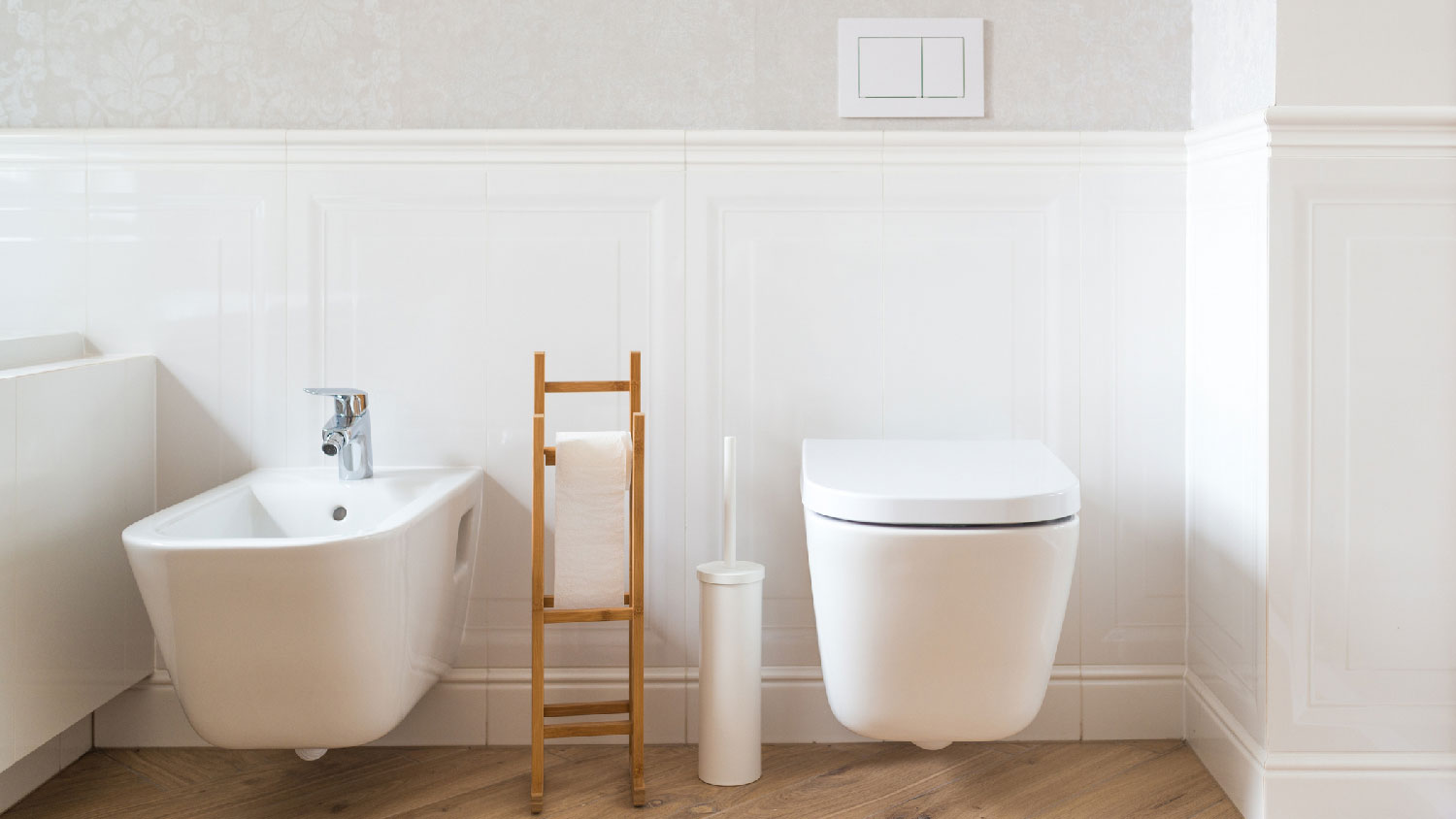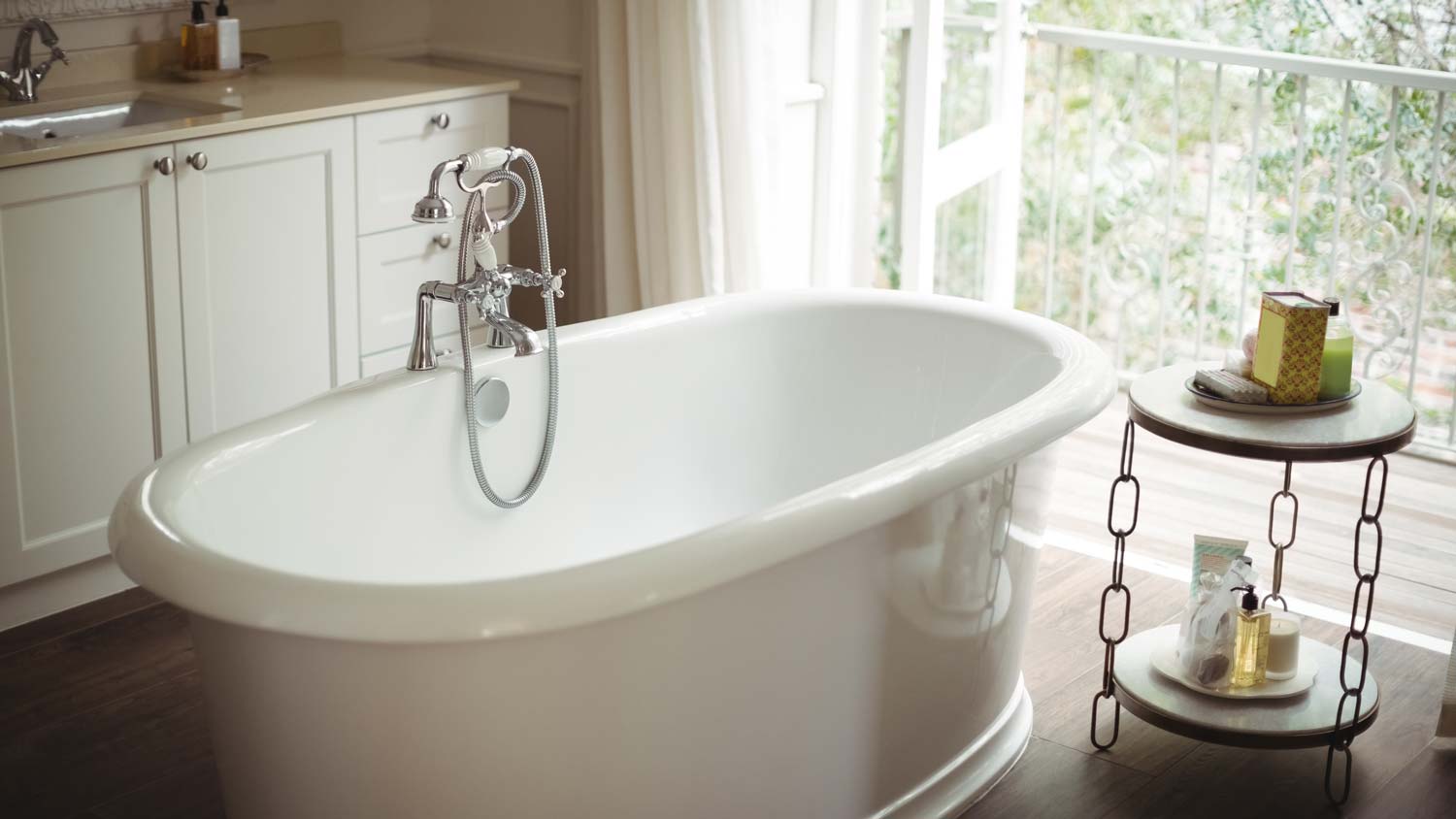
Remodeling your bathroom can add significant value to your home. Your bathroom remodel cost in Orlando, FL will depend on size, fixtures, materials, labor, and other factors.
It’s time to explore other toilet options


Bidets date back to 18th-century France but aren’t common in the U.S.
Bidet toilet seats and nozzle attachments can turn your current toilet into a bidet.
While toilets are more familiar, bidets offer a superior clean.
If you’re in the mood to shake up your bathroom experience, you may be considering purchasing a bidet. While bidets and toilets serve much the same purpose—to rid your home of waste—they do so in different ways, and if you’re feeling adventurous, a bidet might be for you. Understanding the key differences between a bidet and a toilet can help you make the best choice.
It’s safe to say we all know what a toilet is, but here it is just in case: A toilet consists of a bowl and tank and flushes waste away after the user does their business. A bidet serves the same function but with the added feature of a nozzle that provides a gentle spray and reduces the need for toilet paper.

A bidet, while popular in Europe, hasn’t caught on in the same way in the States—though they did see a surge in popularity during the toilet paper frenzy at the beginning of the COVID-19 pandemic. But bidets have actually been around for centuries and date back to 18th-century France. In its early form, a bidet was separated from the toilet and sat lower to the ground. Before toilet paper, this was one of the better ways to clean up after doing your business (other methods included moss, sea sponges, and even corncobs).
Modern bidets come in various options that work for nearly any bathroom. Standalone bidets are reminiscent of their original form, and bidet toilets combine the bidet and toilet into one unit, making it easier to fit into smaller bathrooms. Bidet toilet seats replace the standard seat, so you can use a bidet without replacing the entire toilet.
| Pros | Cons |
|---|---|
| More eco-friendly and hygienic | May be difficult to get used to |
| Saves money on toilet paper costs | Upfront cost for the bidet or bidet attachment |
| Accessible for those with mobility issues | Bidet seats and attachments may require electricity |
Best for:
Homes with a septic tank system
Households that want to save on toilet paper costs
Those who want a cleaner experience
Bidets offer a cleaner bathroom experience as they use a stream of water to rinse rather than using toilet paper alone. They’re also more eco-friendly because they save on toilet paper waste, and if you have a septic tank, it will reduce the amount of paper that ends up in the tank, which can result in less frequent tank pumpings. Bidets can also include features like different nozzle settings and a heated seat. They’re an easy DIY installation project if you purchase a bidet toilet seat or spray nozzle.
Unfamiliar to many Americans, bidets represent a deviation from what many are comfortable with. The spray can take a bit to get used to, and the water will be cold unless you purchase a model with a warm water option. There is also an upfront cost to purchasing the bidet or bidet toilet seat, so if budget is a concern, stick to a standard toilet seat.
If you’re installing a bidet toilet seat or a standalone bidet, you may need help from a local toilet installer. A standalone bidet will require plumbing modifications to attach the water supply correctly, and if the bidet requires electricity, you’ll need to hire an electrician. While you can likely install a bidet toilet seat yourself, you can always hire a pro if you’re uncomfortable with the process or don’t have the time to dedicate to it.


Toilets consist of a bowl and tank that work together to whisk waste away from the home and into the septic or sewer. Toilets come in two-piece or one-piece models, but different types of toilets, like wall-mounted units and urinals, are also available. Toilet upgrades include an elongated bowl, dual-flushing capabilities, different toilet seat styles, and water-saving models.
| Pros | Cons |
|---|---|
| Familiar (found in every home) | Generates more toilet paper waste |
| Available in various styles and colors | Can be hard on a septic tank |
| Easy to maintain | Not as hygienic |
Best for:
Homeowners who are comfortable with the current system.
Those who don’t want to clean additional parts.
Homes without easy electrical access for bidet seat attachments.
Toilets are a mainstay of American bathrooms, so you likely have one in your home. And if you’re buying a new one, chances are you know exactly what you’re looking for and can upgrade with different colors and styles. Standard toilets are also very easy to maintain and cost a few hundred dollars to purchase and install.
New bathroom fixtures can make your toilet look dingy or outdated in comparison. Now’s the chance to replace it with a modern model, like one with an elongated bowl, to match your bathroom upgrades.
Toilets are excellent at their job (removing waste), but bidets also do the rinsing for you. Plus, toilet users go through a substantial amount of toilet paper waste that ends up in the sewer or septic system. And toilet paper isn’t the most hygienic way to clean up after using the bathroom.

Bidets offer a host of benefits, but are bidets better than toilets? Here’s a breakdown of factors that may affect your decision to stick with a toilet or get a little more adventurous with a bidet.
The winner of this category depends on how you look at the cost. The cost to install a toilet ranges from $250 to $550, while the cost to install a bidet falls between $40 and $1,500. You can purchase a handheld spray nozzle for about $40, while a bidet toilet costs closer to the higher end of the range.
If you install a spray nozzle or bidet toilet seat, the bidet is the winner. But if you need an entire toilet, buying the standard version (without a built-in bidet) will be easier on your wallet—and you can always add a bidet attachment later.
Another cost factor to consider is the continual purchase of toilet paper. On average, Americans use about 140 rolls of toilet paper per year. The amount spent per household varies based on the number of people who live in the house and the toilet paper brand they buy. Bidets allow people to use less toilet paper and save money.
Cleaning a toilet is simple—squirt some cleaner in and swish the brush around. While still easy to maintain, a bidet requires more finesse since some models include electronics you’ll need to avoid or be gentle with while cleaning. Also, more electronics mean more potential for malfunctions. While rare, buildup can occur in the nozzles, requiring more time and cleaning to get it back in working order.
Americans use quite a bit of toilet paper that gets flushed away. Bidets mostly eliminate the need for toilet paper, though some may use a few squares to dry off. You can reduce waste and have a more sustainable bathroom with a bidet.
Manufacturing toilet paper also requires electricity, trees, and equipment. Using a bidet reduces the need for toilet paper and costs about $30 per year in water and electricity compared to roughly $160 per year in toilet paper costs for a family of four.
Without getting too graphic, going to the bathroom can be a messy process, and using dry toilet paper can make it even messier. Bidets use a gentle stream of water to clean up and reduce the need for toilet paper, making the entire process more hygienic and cleaner.
From average costs to expert advice, get all the answers you need to get your job done.

Remodeling your bathroom can add significant value to your home. Your bathroom remodel cost in Orlando, FL will depend on size, fixtures, materials, labor, and other factors.

The cost to add a bathroom takes into account whether it’s a half or full bath, square footage, plumbing, electrical, and more. Read on for a cost breakdown.

Whether you're dreaming up a new office or a peaceful sunroom, home addition costs will shape your design. Learn how much a home addition costs in Orlando, FL.

What is a range in a kitchen, and which is best for your cooking needs? Learn about the various types of kitchen ranges and what to consider before buying one.

An updated bathtub can give a bathroom a whole new look. Find out how much it costs to replace a bathtub in Dallas, TX, including prices by type and labor costs.

Small bathroom remodel costs depend on a number of factors—like what exactly you’re upgrading and the size of the room. This guide will help you budget.